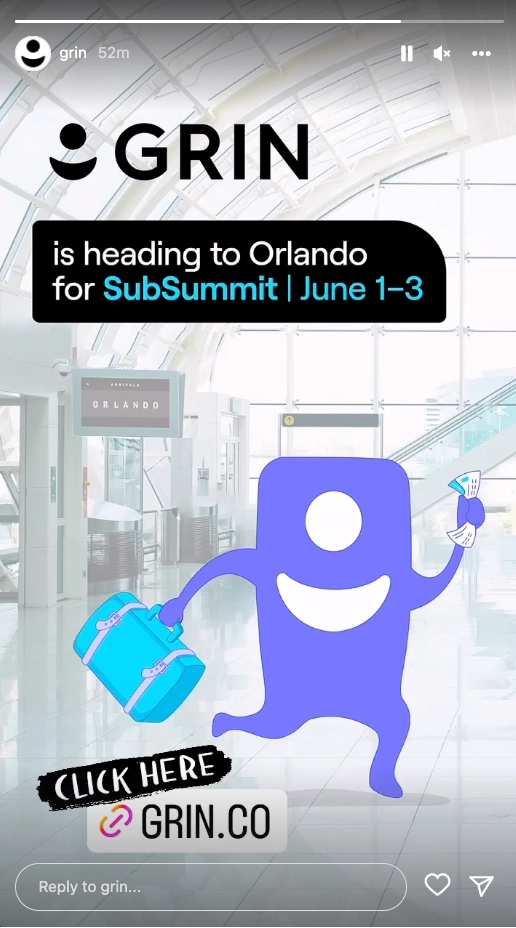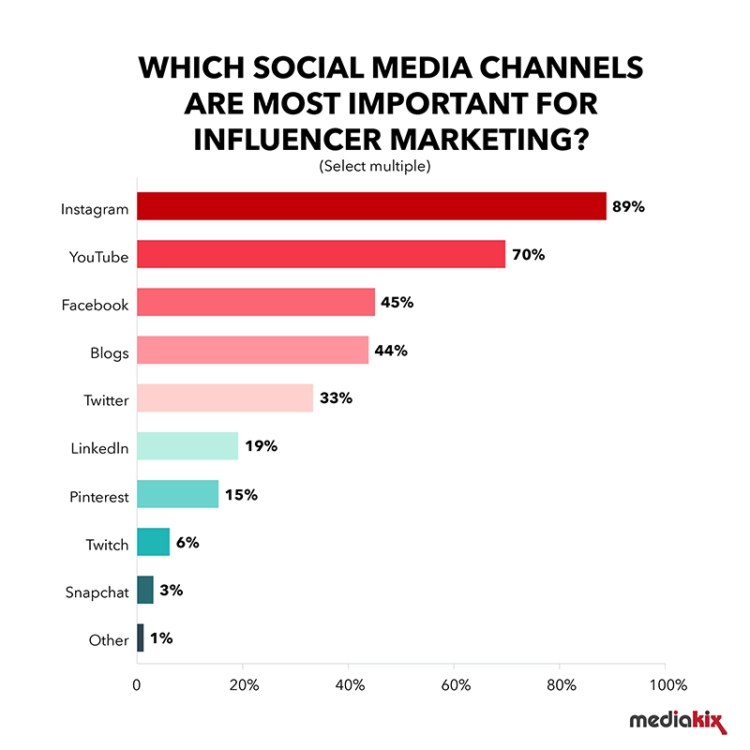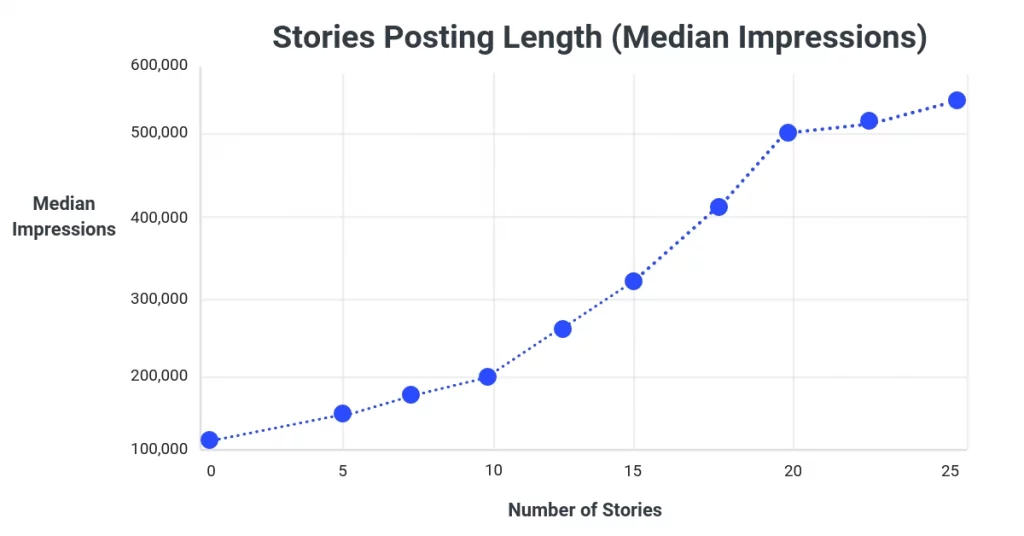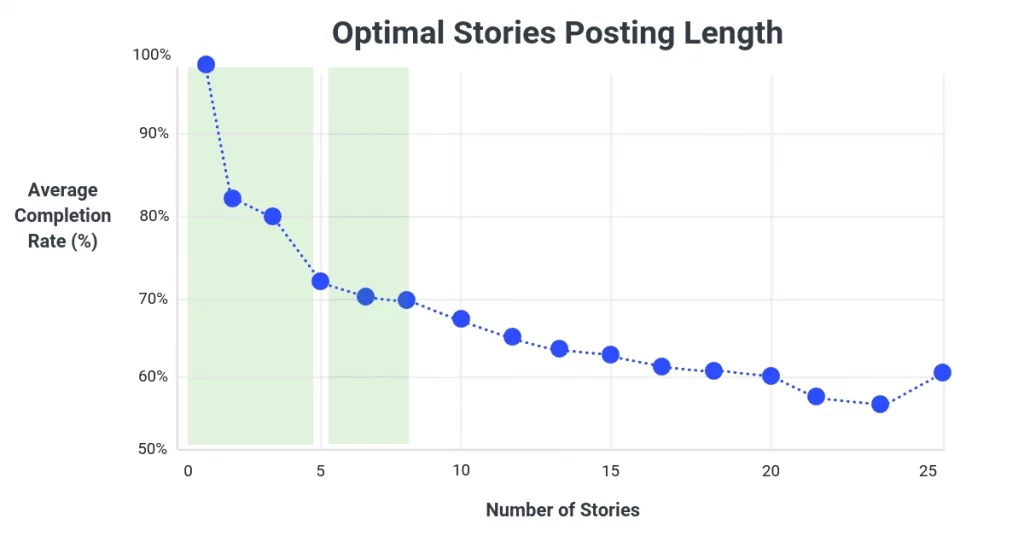Reading Time: 13 Minutes
More and more influencers are engaging audiences via Instagram Stories. Brands partnering with these influencers are also noticing higher engagement metrics using stories, especially after Instagram added its story swipe-up feature.
However, Instagram Stories can be intimidating for marketers that are unfamiliar with them. Without proper planning, tracking performance metrics from Instagram Story influencer campaigns is almost impossible.
But the good news is that there are many tools and techniques to help you learn Instagram Stories and track results at the same time. Read further to learn about Instagram story tracking techniques.

Instagram is arguably the most influencer-rich social media platform today. Focused on images and videos, Instagram offers numerous filters and editing tools to empower users to become serious content creators.
That’s why most influencer programs spend much of their time on Instagram influencers. As other channels like YouTube and TikTok continue to grow their influencer base, Instagram remains the industry pacesetter.

Instagram built its platform with content creators in mind. Additionally, Instagram’s vision for more authentic consumer-brand engagement gives influencers more options to nurture online communities of niche consumers.
“With over 1 billion users and a fast-growing network of influencers churning out millions of sponsored posts each year, Instagram has become the most important influencer marketing channel.”
– BigCommerce, The State of Influencer Marketing: 10 Influencer Marketing Statistics
Since the platform launched, Instagram has added ongoing improvements that specifically help influencers achieve greater authenticity and connections with their audience. For example, the Instagram Creator Profile is a premium analytics tool to help influencers learn what interests their followers.
Influencers can do more than post pics on their Instagram feed; they can create a sequence of images and videos as an Instagram Story. These stories generate significant engagement and impressions. Further, Instagram users have more options to make their story content exciting.
Stories last 24 hours on an influencer’s profile. When an influencer posts a story, a colorful ring emerges around the influencer’s icon to signal to followers that they’ve posted a story.
Instagram users can add as many images or videos into a story sequence as they like. Additionally, users can add a wide range of stickers to increase engagement.
When using Instagram Story stickers, influencers have more options than adding cute icons to their images or videos. Instagram’s Story sticker collection includes the following features:

These stickers are one of the reasons why followers love Instagram Stories. More importantly, stickers provide more ways for followers to engage.
Instagram Story features also offer tag (@mention) and hashtag (#hashtag) options. For you influencer campaigns, these will be the most critical for helping you track influencer Instagram Stories.
For more convenient conversions, Instagram allows influencers to add swipe ups to their stories. This benefit gives fans the option to respond to promotions, sales, events, and subscriptions right from their favorite influencer’s story post.

The alternative is for influencers to point consumers to their profile bio, which interrupts the user experience. Swipe-ups take followers directly to the influencer link to complete a purchase or claim a promotion.
Story highlights allow your influencers to post their stories longer than 24 hours. This feature is handy for campaigns that last over several days. They’re also handy for long-term brand ambassadors that want to update a story highlight once every few days, weeks, or months.
Many influencers gain more traction with story campaigns. The trick is that these posts work differently from standard Instagram (or other social media) posts.
Unless an influencer activates the chat or share sticker, followers can’t comment or share. However, influencers can use the tag sticker (@mention) to incorporate another Instagram account. If an influencer tags you in their story, you have the option to repost that story to your brand page.
Tracking Instagram Stories will require you to have specific conversations with your influencers about what stickers to use so that you can track these posts. Without adding certain sticker features, the only way to track influencer Instagram Stories is through link clicks (swipe-ups). Unless you see the post within the 24-hour window, you may never know that an Instagram Story occurred or how many impressions it made.
The most important Instagram Story properties for your influencer campaigns are hashtags and tags. These tracking features instantly alert you about Instagram Stories in your campaign. If you’re using an influencer marketing automation tool like GRIN, the platform will automatically aggregate those tags and hashtags and track engagement.
Due to the fact that Instagram Stories work differently from regular social media posts, it’s a good idea to take some time to discuss performance tracking with your influencer and marketing team.
Your objectives should dictate your expectations. Similarly, your influencer will have valuable feedback on how their approach to Instagram Stories will help you best meet your campaign goals.
Your expectations can also help you and your influencer establish key performance indicators (KPIs), such as:
Because Instagram Stories only last for 24 hours, you should discuss with your influencer when they will post, how many images/videos they plan to put into a story sequence, and whether or not to add a story to the influencer’s highlights.
While your influencer may post as many images/videos as they want into their daily Instagram Story, it may not be effective to make story sequences very long. Your influencer will have a good idea of what best resonates with their audience. That’s why it’s a good idea to discuss Instagram Story length with your influencers beforehand.
Without hashtags and tags, it will be difficult for you to track influencers’ Instagram Stories. You should establish which hashtags and tags your influencer will use in your campaign brief.
As you launch your campaign, you’ll be able to see mentions within your Instagram profile and search hashtags.
When verifying influencer Instagram Stories, there are several key metrics that you should note. You can tie each metric to one of your campaign KPIs. Specifically, you’ll want to track:
Impression & reach
Impressions and reach show how many people viewed an influencer’s story. For brand awareness objectives, your story impressions will signal a certain level of success.

Every audience behaves slightly differently. As a general rule, an influencer that is experienced and consistent with Instagram stories will perform better. That said, you can collaborate with your influencer about the ideal story length for each campaign.
Completion rate
An Instagram Story completion rate refers to how many times a follower watched every image or video sequence in its entirety. A completion rate can indicate how engaged followers are with an influencer’s Instagram Story.

Once again, your influencer will already have a pretty good idea of how many stories in a day will both provide the best content volume and hold follower interest. Most users enjoy a “sweet spot” of seven or eight stories per day.
Engagement
Engagement entails impressions, completion rates, and more. Depending upon what stickers and tags your influencer used in their Instagram Story posts, followers may be able to vote in a poll or engage in a chat with the influencer. Lastly, followers can respond to a story via swipe-ups.
Swipe-ups (CTR)
Adding a swipe-up link to an influencer Instagram Story campaign is a more effective way of driving sales. All followers need to do is swipe-up on a story post and arrive at a landing page. From there, customers can request more information, make a purchase, claim a coupon code, or explore your website.
If your influencer campaigns involve swipe-ups, you will want to track them as CTRs. Remember that Instagram only allows swipe-ups for influencers with 10,000 or more followers.
Manually tracking influencer Instagram Stories is not easy. First, stories only last for a 24-hour period, unless the influencer is adding the story to their highlights. Additionally, audience engagement typically increases throughout the course of the day. Manually tracking these metrics can become very tedious if you’re managing several influencer campaigns with Instagram Stories.
Organifi noted how using influencer automation tools helped them stay on top of Instagram Story campaigns.
“We will go into GRIN and look at influencer insights. You can filter out for [Instagram] Stories, you can filter percentage of engagement, and that’s typically where we go in and see that ‘so-and-so’ shared yesterday and that they used the correct tag and hashtag. And we know the content is gonna get pulled into GRIN.”
– Lauren/Taylor on Brands Working Remote Talking Influencers
Tracking these Instagram Story metrics ensures that you are achieving maximum ROI on your influencer campaigns. It will also help you gauge whether regular posts or stories are a better fit for your products or services.
Learn more about influencer marketing: Influencer Marketing 101
Our team keeps a finger on the pulse, so you’re always working with the latest information.